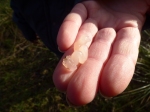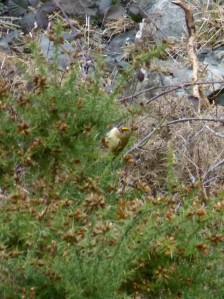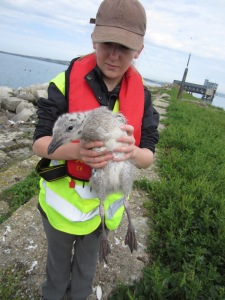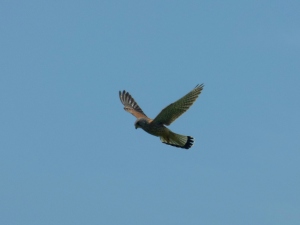A New Dawn
Well, I am all settled in here in Cambridge, and I have started a new job too! However, I shall come onto that momentarily, as I had some interesting wildlife sightings beforehand.
Before the live wildlife sightings, I took a train ride down to big old London town for a meeting at the Natural History Museum. A wonderful meeting, and in addition, I got a quick tour of Angela Marmont Centre – a resource for naturalists! When we went to look at the specimens, naturally I requested to see the Lepidoptera. How superb it was! I spent much of it just going “oh wow … oh look at that one … oh that’s gorgeous”!
Following this, my parents came to see where I am now living and we went for a lovely autumn wander in the nearby woods and fields. Toby had a wonderful time – lots of new smells to investigate! And then we enjoyed a scrumptious Victoria Sponge that I had made as a belated birthday cake for my mum. I suppose I ought to be modest, but it really was scrumptious.
I’m trying to learn how to garden as best I can. I am not naturally green-fingered but I am giving it a go nonetheless. The pond had been completely covered with grass, so I have been clearing that. I haven’t done all of it yet, I wasn’t sure if I should, but I have done a good proportion of it. And managed to spot a little frog (Rana temporaria) whilst doing so! A couple of days later I was pruning the hedge (which is attempting to take over the garden) and found the summer form of the Hawthorn Shieldbug (Acanthosoma haemorrhoidale, the first generation in spring looks different). Matt and I are collating the garden list, I wonder what else will turn up? Domestic cat has – on numerous occasions!
A Saturday morning dawned bright and mostly clear of clouds, and we took ourselves to RSPB’s Fen Drayton Lakes where autumn had definitely taken hold. However, I did spot a couple of bramble flowers! At the end of October! Very odd, or perhaps not? I’m not sure. From what I remember, we saw almost 50 different bird species in just a couple of hours – including my first Bittern (Botaurus stellaris)! Strangely Matt spotted it from the car park within a minute of getting out the car! Other highlights included Marsh Harrier (Circus aeruginosus), Devil’s Coach Horse Beetle (Staphylinus olens) and Ruby Tiger Moth caterpillar (Phragmatobia fuliginosa). For the latter, I risked life and limb to protect it from cyclists zooming past, before managing to safely relocate it off the path!
And so, suspense over – news of my new job! *drum roll* I am now working in the Visitor Welcome and Membership Team at National Trust’s Wimpole Estate. It’s a beautiful location and the team are absolutely lovely! Do flick through the photos below!





















































































































































































































































































